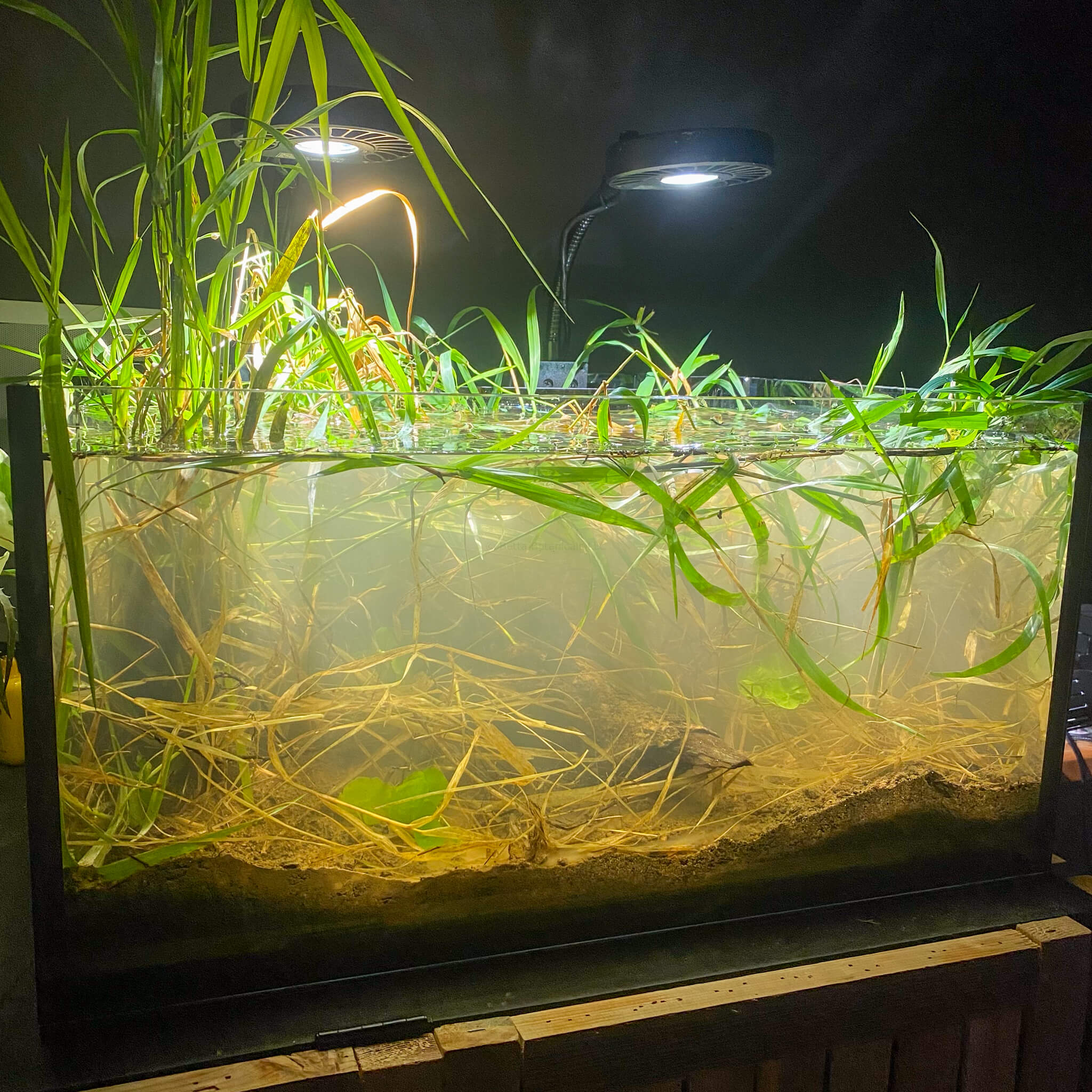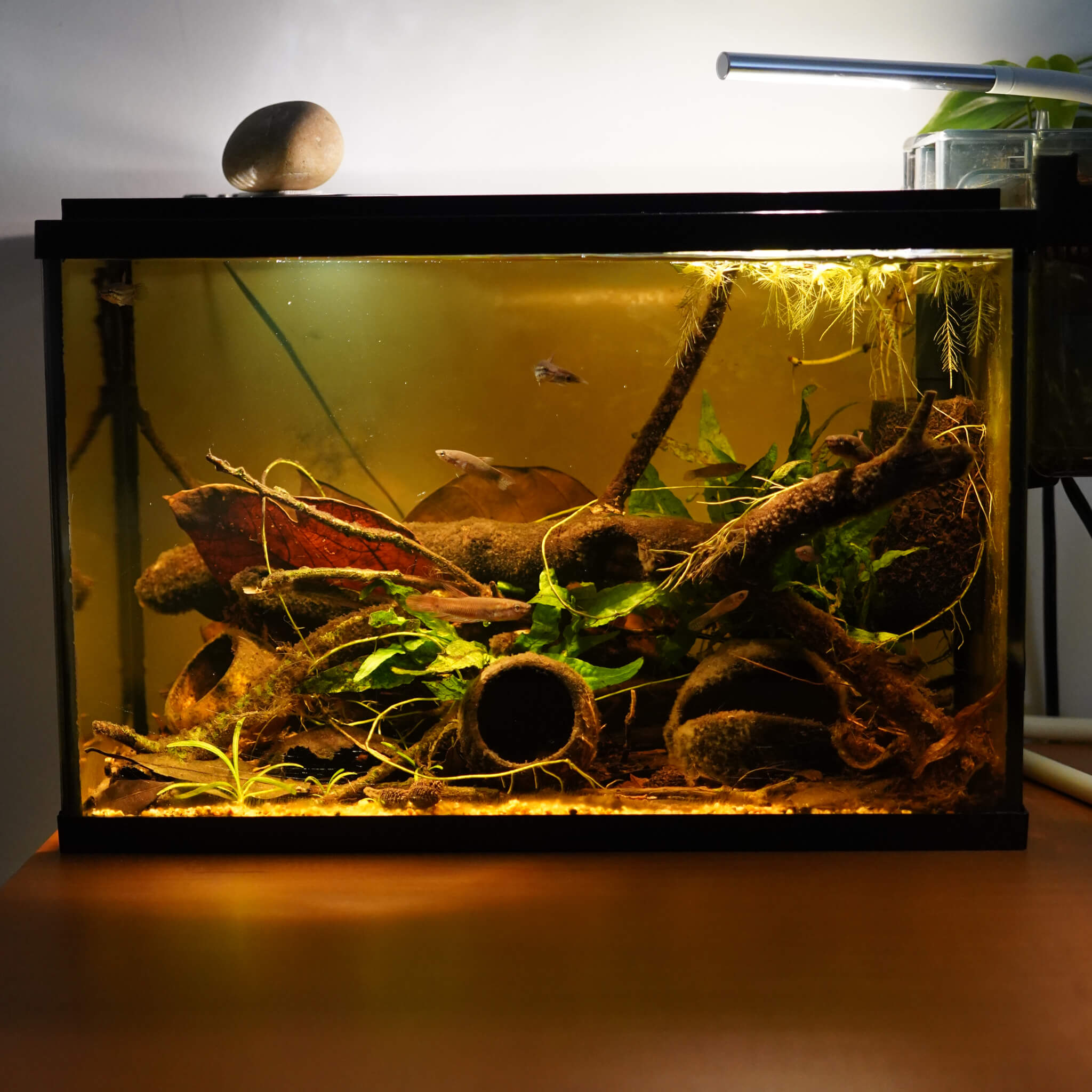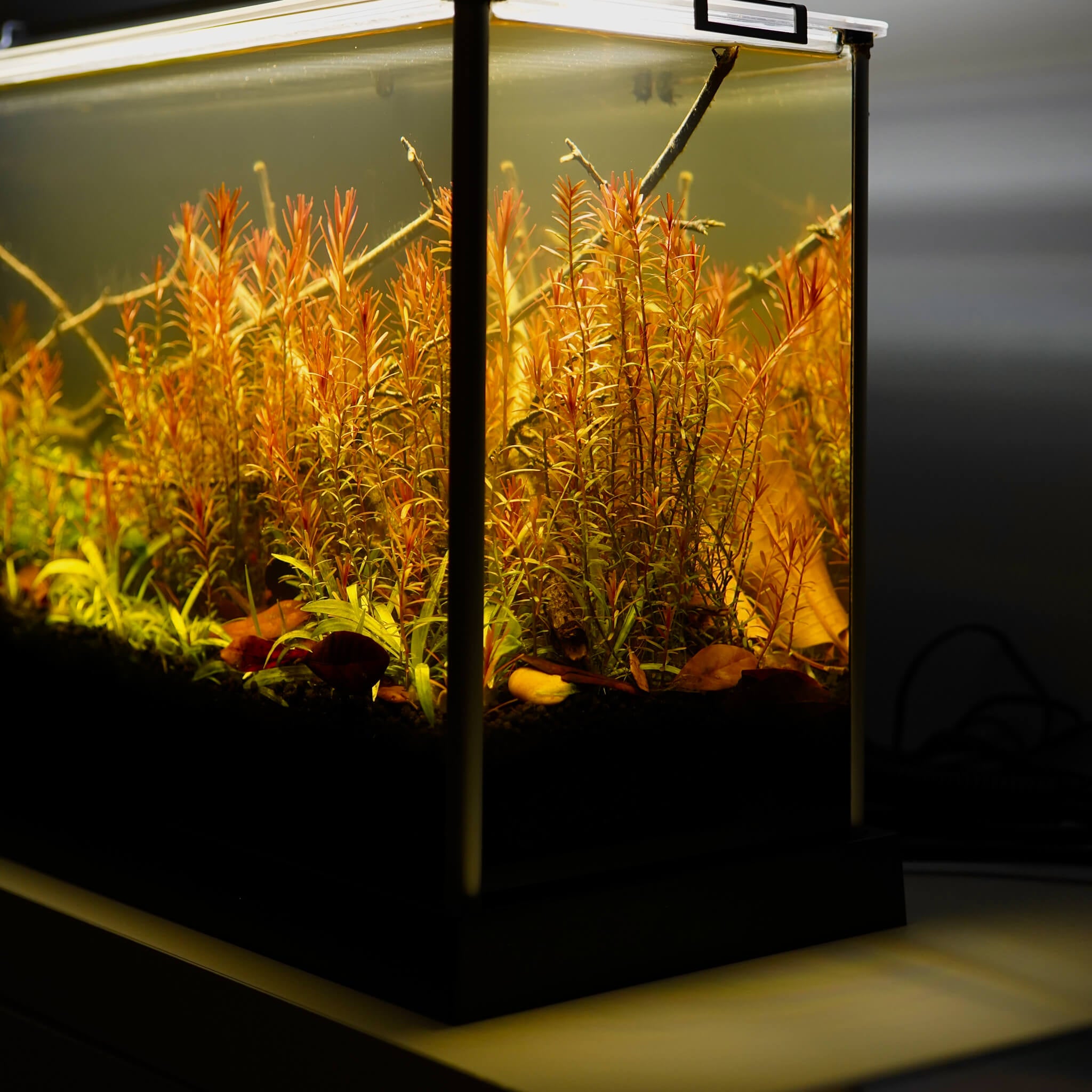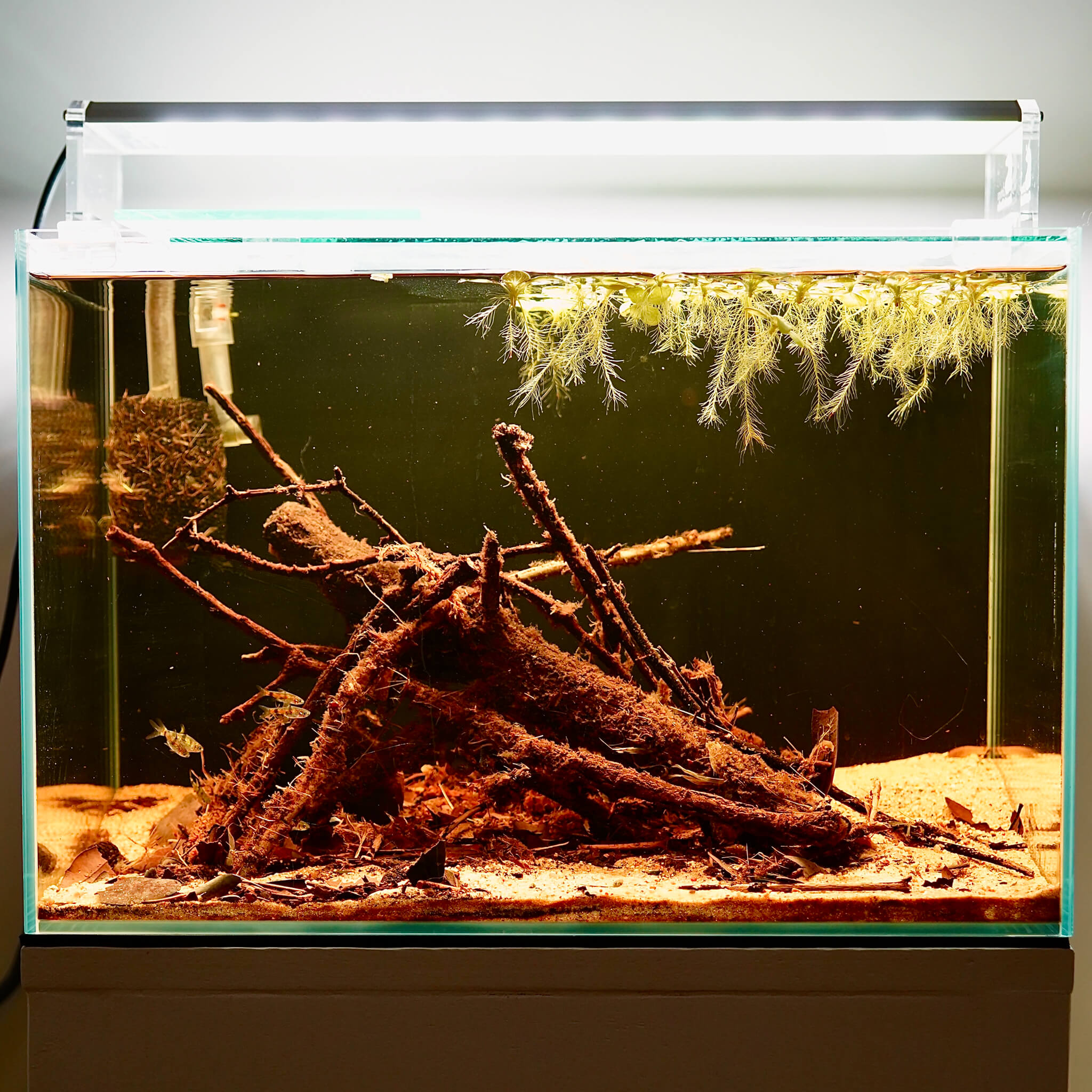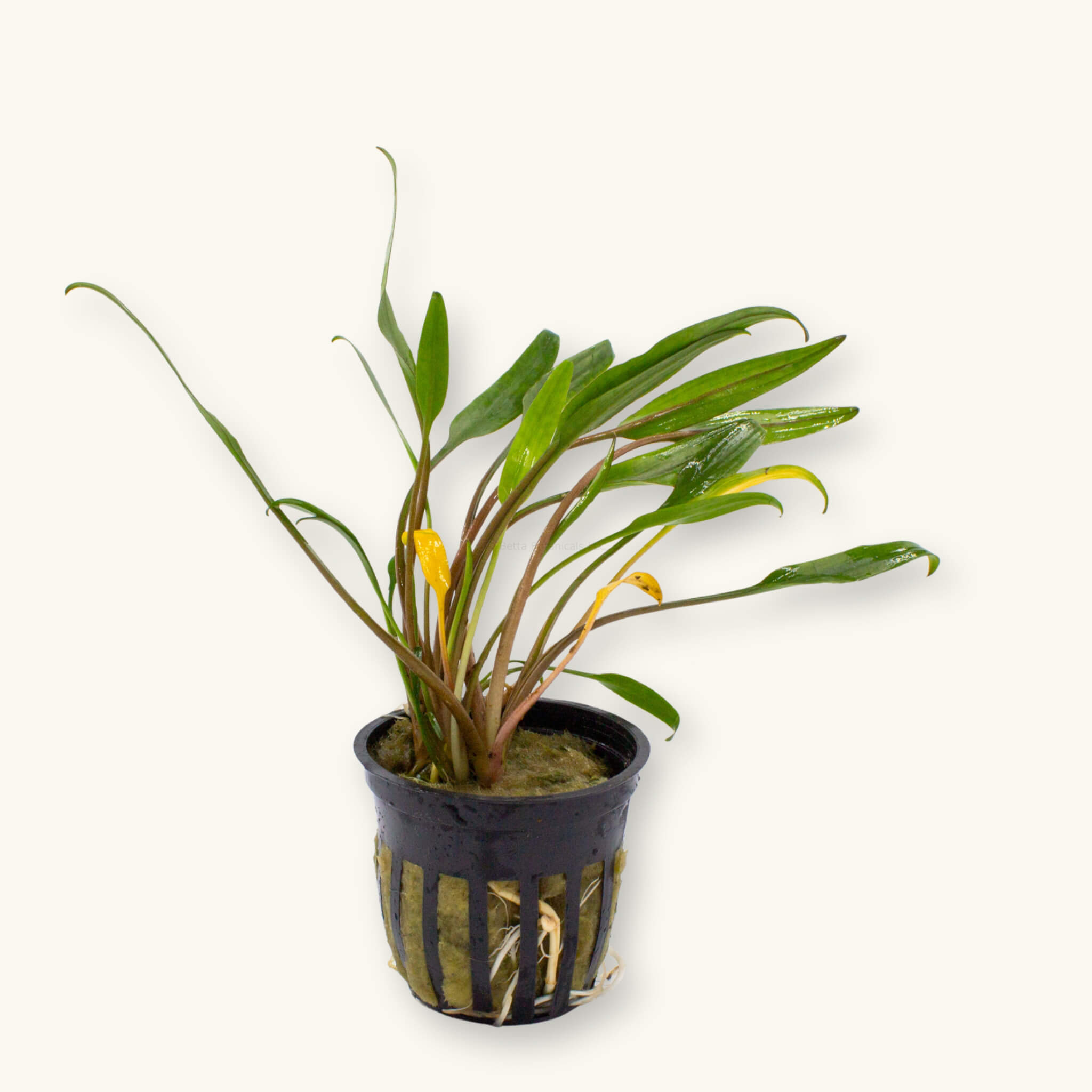
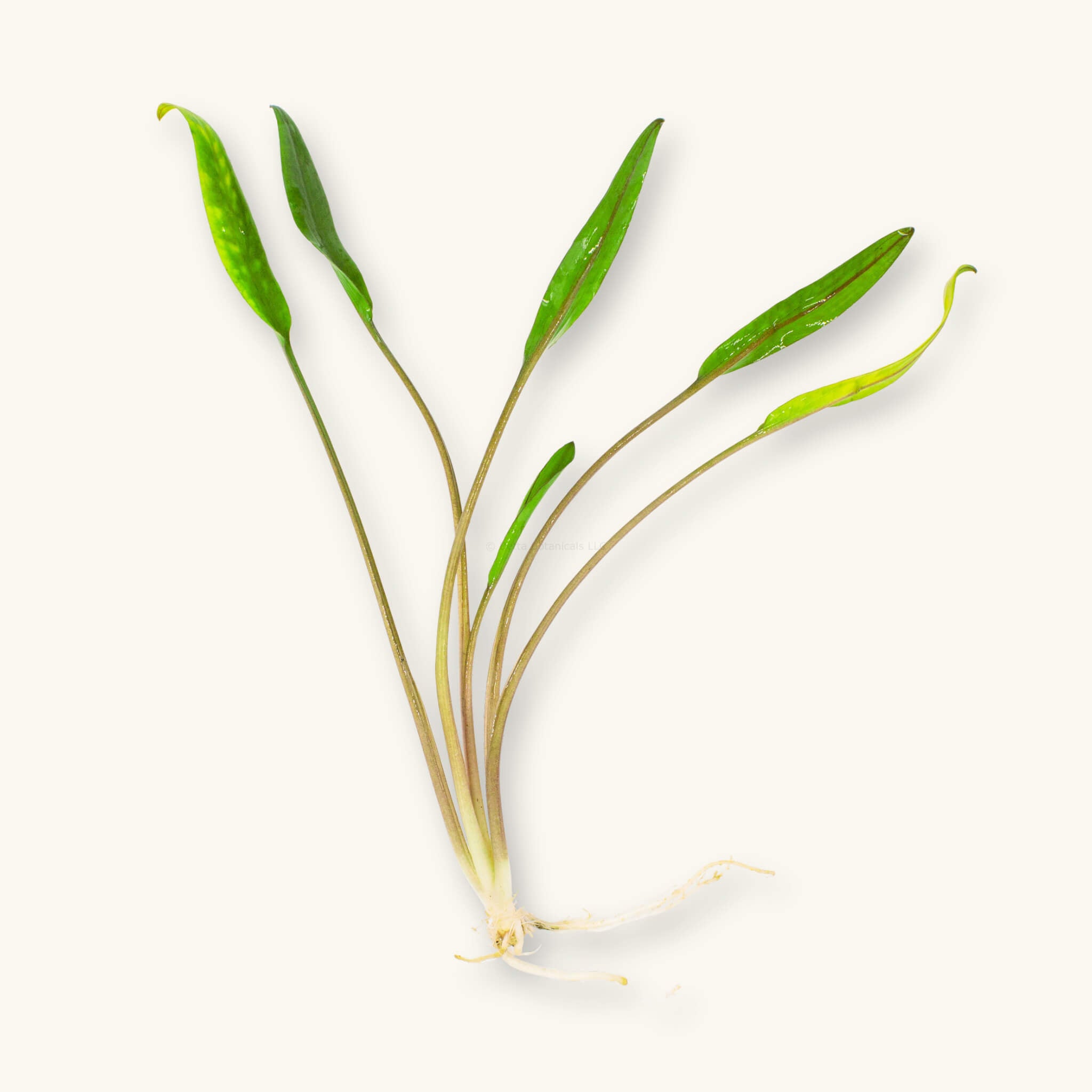
Cryptocoryne Lucen
Cryptocoryne lucens
Scientific Name: Cryptocoryne lucens
Common Name: Crypt Lucens
Cryptocoryne lucens is a compact, bright-green crypt that forms tidy stands of upright leaves. Unlike its close relative, Cryptocoryne lutea, lucens tends to stay smaller and grows more vertically, making it well-suited for foreground to midground placement in botanical method, blackwater, and biotope aquariums. Once established, the plant spreads slowly by sending out runners beneath the substrate, eventually creating lush clusters that resemble underwater grass. Because of its smaller stature and tolerance of low light, it is an excellent choice for tinted waters in the foreground of aquariums.
When first introduced, Crypts often “melt,” losing their emersed leaves before regrowing submerged foliage. This is normal and should not be a cause for concern. Once settled, lucens is hardy and resilient, especially when provided with stable water parameters and a nutrient-rich substrate. Root tabs are recommended in inert sand setups, and like all crypts, lucens prefers to remain undisturbed once planted.
Caring for Cryptocoryne lucens in Blackwater Aquariums
- Care Level: Easy
- Light Requirements: Low; tolerates shade beneath wood and botanicals
- CO₂: Not required
- Growth Rate: Slow and steady
- Tint Tolerance: Accepts low–medium tannin levels
- Native Habitat: India and Sri Lanka, often found in shaded, slow-moving waters
- Tank Placement: Foreground to Midground
All Plants may contain snails or snail eggs. We keep them in all of our tanks for the benefits they provide. Our blackwater aquarium plants are provided by H2OPlants in adherence to their Shipping and DOA Policies. Your curated selection will arrive in their packaging separate from your botanical & merch orders.

Cryptocoryne Lucen
contrast the tint with greenery
While the aesthetic appeal of tinted waters can be quite attractive to us, the recreation of nature—which includes both submerged and emersed plants—is the end goal. Flora helps to improve water conditions, feeding patterns, spawning displays, and territory building.
Aquatic Plant FAQs
DOA Policy
Please ensure that you add a heat pack or cold pack to your orders if temperatures in your area are above 90°F or below 40°F. Click for more info on our DOA Policy.
Are these plants duckweed and snail free?
All Plants may contain snails or snail eggs, small macroinvertebrates, and duckweed. We keep them in all of our tanks for the benefits they provide. We have experienced the presence of small snails, ostracods, daphnia, and beneficial detritus worms.
Are your plants only for tinted water conditions?
Nope! All of our plants will grow perfectly in untinted aquariums that have CO2 and aquasoils, or low-tech planted aquariums. Our selection, though, is optimized for emersed plant growth and low- to medium-tinted water environments.
What is your aquatic plant shipping schedule?
We’re a small company and ship Tuesdays & Thursdays only. Orders placed Wednesday–Sunday → Ship Tuesday. Orders placed Monday–Tuesday → Ship Thursday
Are your plants just for bettas?
Nope. Our aquatic plants are safe for almost all aquariums, terrariums, vivariums, and paludariums. Many of our plants can be grown emersed in filter compartments, vivariums, or incorporated into wabikua.
What are Tannins?
Tannins are natural compounds released by leaves, seed pods, and bark as they decompose in water. They soften water, gently lower pH, and create the characteristic tea-stained tint found in blackwater habitats. But their role goes far beyond color—tannins fuel beneficial bacteria, fungi, and biofilms, which form the foundation of a healthy ecosystem. They also offer mild antifungal benefits and help reduce stress in fish by replicating the natural conditions they’ve evolved in. At their core, tannins are plant-derived antioxidants that connect your aquarium to the same processes at work in wild flooded forests and streams.




